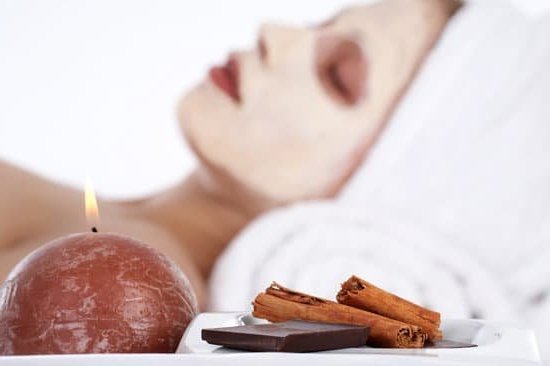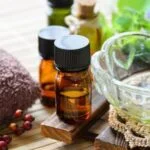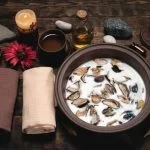Community aroma aromatherapy holds the key to unlocking a sense of connectedness and well-being within a group setting. In today’s fast-paced world, where stress and anxiety are prevalent, the power of aromatherapy in fostering a sense of community has never been more crucial. This article delves into the captivating world of aromatherapy and its ability to bring people together for a shared experience of relaxation and healing.
Aromatherapy has a rich history dating back centuries, with origins rooted in ancient civilizations that recognized the therapeutic benefits of scents for physical, mental, and emotional health. From its early beginnings to its evolution into modern practices, aromatherapy continues to be embraced for its profound impact on overall well-being. Understanding this history provides valuable insights into how essential oils can positively influence our mental and emotional states.
The benefits of aromatherapy extend far beyond just pleasant smells; they have the potential to transform our way of living by promoting relaxation, reducing stress, and improving mood. By creating a community aroma aromatherapy space, individuals can come together to experience the rejuvenating effects of essential oils in a harmonious environment designed for healing and connection. Stay tuned as we explore how communities can harness the power of aromatherapy to cultivate a sense of unity and wellness among its members.
History of Aromatherapy
Aromatherapy has a long and rich history that dates back thousands of years, with roots in ancient civilizations such as Egypt, China, India, and Greece. The practice of using aromatic plant extracts for therapeutic purposes can be traced back to the early Egyptians, who incorporated essential oils into their embalming rituals and healing practices. In China, aromatherapy was used in conjunction with herbal medicine to promote balance and harmony within the body.
The term “aromatherapy” was coined by a French chemist named René-Maurice Gattefossé in the early 20th century. Gattefossé accidentally discovered the healing properties of lavender oil when he applied it to a burn on his skin and witnessed its remarkable ability to promote healing and reduce scarring. This serendipitous event sparked scientific interest in the potential benefits of essential oils for physical, mental, and emotional well-being.
Over time, aromatherapy has evolved from a niche practice to a popular holistic therapy embraced by individuals seeking natural solutions for various health concerns. Today, aromatherapy is widely used in spa treatments, massage therapy, skincare products, home fragrance diffusers, and more. Its versatility and effectiveness have made it a valuable tool in promoting overall wellness and relaxation within communities around the world.
In the modern era, as people increasingly seek alternatives to conventional medicine and prioritize self-care practices that support their well-being, the popularity of aromatherapy continues to grow. By understanding the historical foundations of aromatherapy and its evolution into a respected form of complementary therapy, individuals can appreciate the enduring impact of scent-based healing practices on physical health, emotional balance, and spiritual growth within their communities.
Benefits of Aromatherapy
Aromatherapy, the practice of using essential oils to promote physical and psychological well-being, has long been recognized for its therapeutic benefits. When it comes to mental and emotional health, aromatherapy can play a significant role in reducing stress, anxiety, and symptoms of depression. The scent molecules from essential oils stimulate receptors in the nose that then send messages to the brain, affecting our emotions and mood.
Stress Relief and Relaxation
One of the key benefits of aromatherapy is its ability to promote relaxation and reduce stress levels. Essential oils like lavender, chamomile, and bergamot are known for their calming properties, helping to soothe the mind and body. Inhalation of these oils through diffusers or inhalers can trigger the release of endorphins in the brain, promoting feelings of relaxation and well-being. Incorporating these essential oils into your daily routine can create a calming environment that supports mental wellness.
Mood Enhancement
Aromatherapy can also have a positive impact on mood enhancement. Citrus essential oils such as lemon, orange, and grapefruit are popular choices for uplifting the spirits and boosting energy levels. These refreshing scents can help combat feelings of fatigue or low mood, providing a natural pick-me-up throughout the day. By incorporating these invigorating essential oils into your space through diffusers or room sprays, you can create a sensory experience that uplifts your mood and promotes emotional balance.
Support for Emotional Well-Being
In addition to stress relief and mood enhancement, aromatherapy can provide support for overall emotional well-being. Essential oils like rosemary, peppermint, and eucalyptus are known for their clarifying properties that can help improve focus and concentration.
By diffusing these scents in your workspace or study area, you can create an environment that fosters mental clarity and cognitive function. The therapeutic effects of aromatherapy extend beyond just relaxation, offering valuable support for emotional stability and mental wellness within a community setting.
Creating a Community Aroma Aromatherapy Space
A key aspect of fostering a sense of community through aromatherapy involves creating a space that is conducive to relaxation and well-being. When setting up a community aroma aromatherapy space, it is essential to pay attention to the environment’s ambiance and design.
Natural elements such as plants, calming colors, and soft lighting can help create a soothing atmosphere that enhances the overall experience of aromatherapy for participants. Additionally, incorporating comfortable seating arrangements and using diffusers to disperse essential oils throughout the space can further elevate the sensory experience.
In order to set up an inviting aroma aromatherapy space for the community, it is important to consider the accessibility and inclusivity of the environment. Ensure that the space is easily accessible to all members of the community, including those with mobility limitations.
Creating a welcoming and inclusive environment will encourage more individuals to participate in aromatherapy sessions and workshops, thus strengthening the sense of community and connection among participants. Moreover, providing information about the benefits of aromatherapy and offering resources for further exploration can help build interest and engagement within the community.
When establishing a community aroma aromatherapy space, it is crucial to prioritize safety and hygiene. Make sure that all essential oils are properly diluted and stored away from direct sunlight to maintain their efficacy.
It is also recommended to have proper ventilation in the space to ensure proper air circulation during aromatherapy sessions. By implementing these tips for creating a relaxing and inviting environment for aroma aromatherapy in the community, individuals can experience a greater sense of well-being and connection with others in shared healing practices.
| Element | Description |
|---|---|
| Ambiance | Natural elements like plants, calming colors, soft lighting |
| Inclusivity | Ensure accessibility for all members of the community |
| Safety | Properly dilute essential oils, store them correctly; maintain good ventilation |
Community Engagement
Community aroma aromatherapy workshops and classes provide a unique opportunity for individuals to come together, learn, and experience the benefits of essential oils as a group. These sessions not only focus on introducing participants to different scents and their therapeutic properties but also foster a sense of unity and connection within the community. During these gatherings, attendees have the chance to engage in hands-on activities like blending oils, creating personalized products, or participating in guided relaxation exercises.
One of the key advantages of organizing aromatherapy workshops is the shared experience it creates among participants. Shared experiences have been shown to strengthen social bonds, enhance communication, and create a sense of belonging within a group.
By coming together to explore the world of aromatherapy, individuals can build relationships with others who share similar interests in health and wellness. This sense of community can lead to increased support networks, improved mental well-being, and an overall positive impact on emotional health.
Furthermore, community aroma aromatherapy workshops can serve as educational platforms where individuals gain knowledge about how essential oils can be used safely and effectively for various purposes. From stress relief to better sleep quality, participants have the opportunity to learn practical techniques that they can integrate into their daily routines. By empowering community members with this valuable information, these workshops contribute not only to personal well-being but also to the overall health of the community at large.
| Shared Experience | Benefits |
|---|---|
| Strengthens social bonds | Improved mental well-being |
| Enhances communication | Positive impact on emotional health |
| Sense of belonging within a group | Increased support networks |
Case Studies
Aromatherapy has been gaining popularity not only as a personal wellness practice but also as a tool for building stronger communities. When individuals come together to experience the power of scents and essential oils, it creates a shared space for healing and well-being. Communities around the world have been embracing aromatherapy as a means to connect, relax, and promote overall health.
Here are some success stories of communities that have wholeheartedly embraced aromatherapy for their wellness:
- The Wellness Collective: In a bustling city neighborhood, a group of like-minded individuals came together to create a wellness collective focused on holistic healing practices. Aromatherapy workshops are a cornerstone of their community events, where residents gather to learn about essential oils, create custom blends, and support each other’s well-being journey.
- Senior Care Facility: A senior care facility introduced aromatherapy sessions as part of their recreational activities for residents. Through scent-based therapy, older adults experienced reduced anxiety, improved sleep quality, and enhanced mood. This initiative not only benefited the individual residents but also fostered a sense of camaraderie among them.
- School Wellness Program: A progressive school implemented an aromatherapy program to support the mental health and focus of students. By diffusing calming scents in classrooms and offering aroma workshops during breaks, students reported feeling more centered and resilient in managing academic stress. The aromatherapy program not only improved student performance but also cultivated a supportive community within the school environment.
These case studies highlight the transformative impact that community aroma aromatherapy can have on the well-being of individuals coming together with a shared goal of health and connection. Whether in urban neighborhoods, care facilities, or educational institutions, the power of scent-based therapy is paving the way for stronger and healthier communities around the globe.
DIY Aromatherapy Recipes
Aromatherapy has long been recognized for its powerful effects on mental and emotional well-being. Creating DIY aromatherapy blends can be a fun and cost-effective way to incorporate the benefits of essential oils into your daily routine. Whether you are looking to relieve stress, boost your mood, or simply create a calming atmosphere in your home, there are numerous recipes that you can try.
Here are some simple aromatherapy blends that you can easily make at home:
- Lavender and chamomile blend: This soothing combination is perfect for promoting relaxation and reducing anxiety. Mix a few drops of lavender essential oil with chamomile essential oil and dilute it with a carrier oil like sweet almond or coconut oil.
- Citrus burst blend: If you need a quick pick-me-up, try blending lemon, orange, and grapefruit essential oils. This energizing combination can help uplift your mood and increase feelings of positivity.
- Peppermint and eucalyptus blend: For a refreshing and invigorating scent, combine peppermint and eucalyptus essential oils. This blend is great for reducing fatigue and increasing mental clarity.
Engaging in DIY aromatherapy not only allows you to customize scents according to your preferences but also gives you the opportunity to experiment with different combinations until you find what works best for you. Whether you choose to diffuse these blends in your home, add them to a relaxing bath, or use them in a massage oil, incorporating aromatherapy into your daily routine can have a positive impact on your overall well-being.
Remember that essential oils are potent substances, so it’s important to use them safely by properly diluting them in carrier oils and conducting patch tests before applying them to your skin. With the right knowledge and precautions in place, creating DIY aromatherapy blends can be a rewarding experience that enhances both individual wellness and community connections through the shared experience of exploring the power of scent-based therapy.
The Future of Community Aroma Aromatherapy
As we look towards the future of community aroma aromatherapy, it is evident that this holistic approach to well-being will continue to evolve and innovate. The power of scents in promoting healing, relaxation, and emotional balance has been recognized for centuries, and with advancements in technology and research, new trends are emerging in scent-based therapy.
These developments are shaping the way communities can come together to support each other’s health and wellness through the use of essential oils and aromatic blends.
One exciting trend in community aroma aromatherapy is the integration of technology to enhance the overall experience. With the rise of apps and devices that can diffuse essential oils or provide personalized scent recommendations based on individual needs, creating a soothing atmosphere has become more accessible than ever before.
This blend of traditional practices with modern tools allows for a deeper level of customization and engagement within community settings, fostering a sense of unity among participants as they explore the benefits of aromatherapy together.
Moreover, innovations in scent-based therapy are also leading to a greater emphasis on sustainability and ethical sourcing of essential oils. As communities become more conscious about environmental impact and social responsibility, there is a growing demand for natural and eco-friendly products in aromatherapy practices.
By supporting ethical suppliers and promoting eco-conscious habits, communities engaged in aroma aromatherapy are not only prioritizing their own well-being but also contributing to a healthier planet. This mindful approach reflects a broader shift towards holistic living that emphasizes harmony between individuals, communities, and nature.
Frequently Asked Questions
What Is the Best Smelling Essential Oil in the World?
The best smelling essential oil in the world is subjective and varies from person to person depending on individual preferences. However, lavender is a popular choice known for its calming and soothing scent that many people find appealing.
Does Aromatherapy Really Work?
Aromatherapy has been used for centuries as a holistic healing treatment. While scientific evidence on its effectiveness is mixed, many people report positive benefits such as reduced stress, improved sleep, and relaxation when using essential oils.
What Is Naha Certification?
NAHA stands for the National Association for Holistic Aromatherapy. NAHA Certification is a program that provides training and education in aromatherapy practices to ensure practitioners meet specific standards of knowledge and competency in the field. It helps establish credibility and professionalism in the aromatherapy industry.

Are you looking for a natural way to improve your health and wellbeing?
If so, aromatherapy may be the answer for you.





